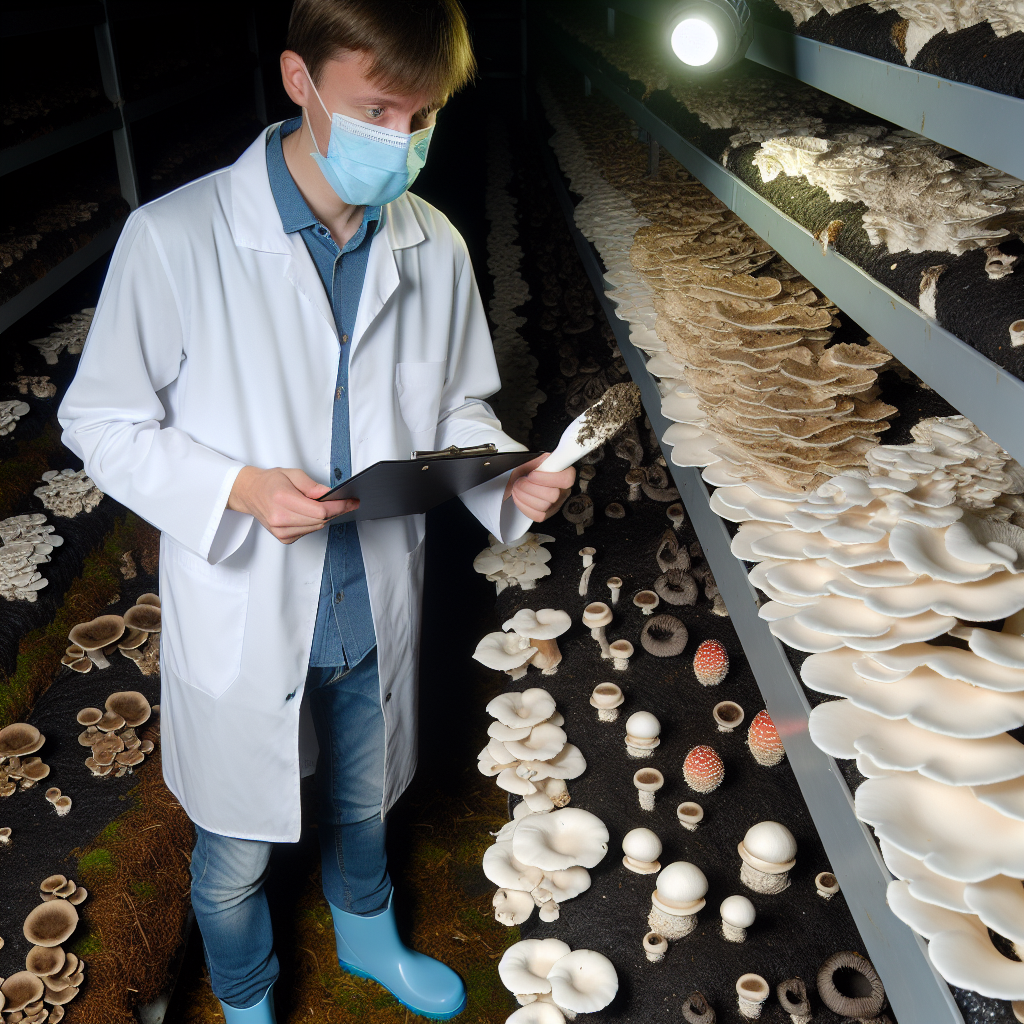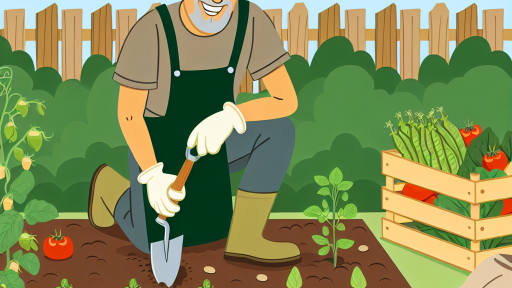Introduction to Mushroom Production
Importance of Mushroom Production
Mushroom production plays a vital role in global agriculture.
Mushrooms are a significant source of nutrition for many people.
They provide essential vitamins and minerals.
Moreover, they offer health benefits, including antioxidants.
Additionally, mushrooms have a lower environmental impact compared to other crops.
The cultivation process requires less water and land.
This makes it a sustainable food source.
Benefits of Mushroom Cultivation
Mushroom cultivation presents various economic advantages.
It allows farmers to diversify their crops.
This diversification can lead to increased profits.
Furthermore, mushrooms can be grown in limited spaces.
This is particularly beneficial for urban farming.
Moreover, they can be cultivated on agricultural waste.
This practice not only reduces waste but also lowers production costs.
As a result, mushroom production can contribute to food security.
Transform Your Agribusiness
Unlock your farm's potential with expert advice tailored to your needs. Get actionable steps that drive real results.
Get StartedIt provides a reliable source of food in challenging conditions.
Understanding Mushroom Varieties: Choosing Cost-Effective Types to Grow
Introduction to Mushroom Varieties
Mushrooms come in various species, each with unique growth requirements.
This diversity allows growers to select varieties suitable for different climates.
Choosing the right mushroom type can affect both yield and profitability.
Common Cost-Effective Varieties
Oyster mushrooms flourish in many environments and require less maintenance.
They produce high yields and grow quickly, making them an attractive option.
Shiitake mushrooms, although slower to grow, have a strong market demand.
They offer substantial returns on investment due to higher pricing.
Button mushrooms are prevalent and relatively easier to cultivate.
They provide consistent revenue and are widely accepted by consumers.
Factors to Consider When Choosing Varieties
Evaluate local climate conditions before selecting mushroom types.
Consider your available resources, including time and growing space.
Market demand should also influence your variety choice.
Research common pests and diseases related to specific mushroom types.
Finally, assess the initial investment required to start production.
Benefits of Growing Cost-Effective Mushroom Varieties
Growing cost-effective varieties decreases overall production costs.
This increases profit margins and enhances sustainability.
Cost-effective mushrooms can lead to reduced waste and resource usage.
They can adapt to various growth environments, providing flexibility.
Varietal selection encourages growers to innovate in cultivation techniques.
Choosing the Right Mushroom Species for Success
Choosing the right mushroom species is a crucial step in production.
Investing time in research pays dividends in overall success.
Starting small with easy varieties can build confidence and experience.
Ultimately, informed decisions lead to a thriving mushroom business.
Showcase Your Farming Business
Publish your professional farming services profile on our blog for a one-time fee of $200 and reach a dedicated audience of farmers and agribusiness owners.
Publish Your ProfileSite Selection: Optimizing Space for Cost-Effective Production
Importance of Strategic Location
Selecting the right location significantly affects mushroom production costs.
A prime site should provide easy access to necessary resources.
Consider proximity to suppliers and markets for better logistics.
A location with adequate drainage prevents waterlogging issues.
Local climate conditions must support the mushroom varieties you choose.
Utilizing Available Space Efficiently
Effective space management increases yield without unnecessary expenses.
Look for underutilized buildings or warehouses to convert into growing areas.
Vertical farming techniques maximize growing surfaces in limited spaces.
Adequate airflow and ventilation systems must be in place for optimal growth.
Strategically placing shelves and racks can enhance accessibility and productivity.
Cost Considerations for Site Selection
Evaluate rental costs versus purchase options for long-term savings.
Consider utility expenses such as heating, electricity, and water.
Research zoning laws to avoid unexpected legal costs or restrictions.
Participation in local agricultural programs can offer financial incentives.
Community engagement can lead to valuable partnerships and resources.
Integrating Sustainability in Site Choice
Choosing sustainable practices reduces long-term operational costs.
Utilize renewable energy sources to lower energy expenses.
Implement rainwater harvesting systems to minimize water costs.
Sustainable materials and methods enhance overall production efficiency.
This commitment can also attract environmentally conscious consumers.
You Might Also Like: Soil Management In Urban Gardening
Substrate Preparation
Utilizing Low-Cost Materials
Substrate preparation significantly impacts mushroom production costs.
Utilizing low-cost materials can enhance profitability.
Farmers can choose from various organic waste materials.
Common options include straw, sawdust, and coffee grounds.
Moreover, these materials are often readily available.
S straw as a Primary Substrate
S straw is an excellent substrate choice for mushroom cultivation.
It is abundant and inexpensive in many areas.
Farmers can acquire straw easily from local farms.
Additionally, straw provides essential nutrients for growth.
Once prepared, it decomposes and supports healthy mycelium.
Sawdust: A Versatile Option
Sawdust is another highly effective substrate for growing mushrooms.
This material often comes from lumber mills at low cost.
Sawdust can retain moisture effectively, promoting growth.
Many mushroom species thrive when cultivated in sawdust.
Farmers can enrich sawdust with supplements like bran.
Using Coffee Grounds
Recycling coffee grounds is a sustainable choice for mushroom cultivation.
Coffee shops often give away used grounds for free.
Grounds provide a nutrient-rich substrate for several mushroom types.
Furthermore, this practice supports waste reduction efforts.
Showcase Your Farming Business
Publish your professional farming services profile on our blog for a one-time fee of $200 and reach a dedicated audience of farmers and agribusiness owners.
Publish Your ProfilePreparing the Substrate
Preparation begins with proper sterilization of the materials.
Steam sterilization effectively eliminates unwanted contaminants.
Farmers can also consider pasteurization methods for hygiene.
Maintaining moisture levels is crucial during substrate preparation.
If the substrate is too dry, it may not support growth.
Inoculation Process
Once prepared, farmers inoculate the substrate with mushroom spores.
The quality of the spores directly affects yield potential.
Choosing high-quality spawn from reputable suppliers is essential.
Proper inoculation techniques ensure optimal colonization.
Monitoring and Maintenance
Monitoring substrate conditions promotes healthy mushroom growth.
Farmers should check moisture, temperature, and air exchange regularly.
Adequate ventilation helps prevent contamination during growth.
Ultimately, consistent maintenance increases overall yield.
Explore Further: Urban Gardening Tools Every Farmer Needs
Cultivation Techniques: Simple and Economical Methods for Mushroom Farming
Selecting the Right Mushroom Type
Choosing the right mushroom species is crucial for successful farming.
Common varieties include oyster, shiitake, and button mushrooms.
Each type has specific growing requirements and market demand.
Evaluate your local climate and resources before making a decision.
Using Low-Cost Substrates
Substrates provide essential nutrients for mushroom growth.
Consider using agricultural waste, like straw and sawdust.
These materials are often inexpensive and readily available.
Proper preparation can enhance their effectiveness as substrates.
Pasteurization helps eliminate contaminants in the substrate.
Implementing Efficient Cultivation Methods
Use container cultivation for limited spaces and resources.
This method maximizes yield within a small footprint.
Consider vertical farming techniques to save space further.
Raised beds can also improve drainage and accessibility.
Monitoring Environmental Conditions
Proper temperature and humidity control is essential.
Invest in affordable tools to monitor these factors regularly.
Ventilation is key to preventing mold and ensuring healthy growth.
Use local weather data to adjust your indoor growing conditions.
Harvesting and Marketing Your Mushrooms
Timing your harvest is crucial for optimal flavor and texture.
Learn the right techniques to minimize damage during harvesting.
Develop a marketing strategy to reach local consumers effectively.
Build relationships with local restaurants and farmers’ markets.
Utilize social media to promote your mushroom products.
Delve into the Subject: Vertical Gardening Solutions For Small Spaces
Pest and Disease Management
Understanding Common Challenges
Pests and diseases pose significant risks to mushroom crops.
They can cause substantial losses and affect overall yield.
Identifying common pests and diseases is crucial for effective management.
Showcase Your Farming Business
Publish your professional farming services profile on our blog for a one-time fee of $200 and reach a dedicated audience of farmers and agribusiness owners.
Publish Your ProfileImplementing Natural Remedies
Natural remedies offer cost-effective solutions for pest management.
Neem oil is a popular choice for controlling insect pests.
Garlic spray can deter various harmful insects.
Additionally, diatomaceous earth helps kill soft-bodied pests efficiently.
Utilizing Biological Control Agents
Biological control involves using natural predators to manage pests.
Beneficial insects like ladybugs and lacewings reduce aphid populations.
Nematodes can target and destroy harmful soil-dwelling larvae.
This approach minimizes reliance on synthetic pesticides.
Adopting Cultural Practices
Cultural practices play a vital role in pest and disease management.
Rotate mushroom varieties to disrupt pest lifecycles.
Clean workspaces regularly to prevent the spread of pathogens.
Moreover, maintaining optimal growing conditions supports crop health.
Monitoring and Early Detection
Regular monitoring helps detect pest and disease issues early.
Use visual inspections to identify signs of infestation swiftly.
Traps can provide valuable data on pest populations.
Implementing scouting programs can enhance detection efforts.
Leveraging Community Knowledge
Joining local farming groups fosters shared knowledge and resources.
Engage in discussions about effective management techniques.
Collaborate with fellow mushroom growers to learn best practices.
Sharing experiences can lead to innovative solutions.
Gain More Insights: Sustainable Practices in Mushroom Agriculture

Harvesting and Post-Harvest Handling: Maximizing Returns with Minimal Investment
Effective Harvesting Techniques
Harvesting mushrooms at the right time maximizes yield and quality.
Employ trained staff to ensure proper handling during the harvest process.
Use sharp tools to avoid damaging the mushrooms and the surrounding substrate.
Consider harvesting in cooler parts of the day for better conditions.
Regularly check for signs of ripeness to determine optimal harvest time.
Minimizing Damage during Harvest
Handle mushrooms carefully to prevent bruising and spoilage.
Utilize lightweight baskets to transport mushrooms gently.
Avoid overcrowding in containers to reduce pressure on harvested mushrooms.
Post-Harvest Processing
Clean mushrooms immediately after harvest to remove dirt and debris.
Use damp cloths for cleaning, ensuring minimal water is used.
Sort mushrooms by size and quality to increase marketability.
Temperature Control and Storage
Store mushrooms in cool, dark places to prolong freshness.
Keep the storage temperature between 32°F and 36°F (0°C to 2°C).
Avoid exposure to direct sunlight, which can deteriorate quality.
Packaging for Market
Choose breathable packaging materials to maintain moisture balance.
Label packages clearly with variety and harvest date for transparency.
Consider using compostable packaging options for eco-friendly marketing.
Transporting Mushrooms
Schedule deliveries during cooler hours to maintain freshness.
Monitor temperature during transport to avoid spoilage.
Showcase Your Farming Business
Publish your professional farming services profile on our blog for a one-time fee of $200 and reach a dedicated audience of farmers and agribusiness owners.
Publish Your ProfileTrain drivers on proper handling techniques to prevent damage.
Marketing Strategies
Develop relationships with local restaurants to sell fresh mushrooms.
Join farmers’ markets to connect with consumers directly.
Utilize social media to showcase products and attract new customers.
Marketing Strategies: Cost-Effective Ways to Sell Your Mushrooms
Developing a Brand Identity
Start by creating a unique brand for your mushrooms.
Choose a name that resonates with your target audience.
Design a memorable logo that reflects your brand’s values.
Consider the packaging that showcases your product effectively.
Utilizing Online Platforms
Leverage social media to promote your mushrooms widely.
Create visually appealing posts that highlight your products.
Join local farming groups to reach potential customers.
Set up an online store to sell directly to consumers.
Engaging with Local Markets
Participate in farmers’ markets to showcase your mushrooms.
Build relationships with local restaurants for consistent orders.
Consider offering samples to attract more customers.
Collaborate with local chefs to create unique dishes.
Implementing Sustainable Practices
Highlight your sustainable farming methods in your marketing.
Educate customers on the health benefits of mushrooms.
Use eco-friendly packaging to appeal to environmentally conscious consumers.
Share your story to connect with customers on a personal level.
Offering Promotions and Discounts
Create bundle deals to encourage larger purchases.
Implement a loyalty program to reward repeat customers.
Promote special offers during peak selling seasons.
Consider referral discounts to gain new customers through word-of-mouth.
Utilizing Technology: Affordable Innovations to Enhance Mushroom Production
Smart Farming Techniques
Smart farming techniques greatly modernize mushroom production.
These methods increase efficiency and yield.
Farmers utilize sensors to monitor environmental conditions.
This technology helps maintain optimal temperature and humidity levels.
Consequently, mushrooms thrive in controlled settings.
Low-Cost Hydroponics
Hydroponic systems offer a cost-effective alternative to traditional methods.
They use less water and provide direct nutrient access.
This approach results in faster growth rates.
Farmers can install simple hydroponic systems with minimal investment.
Moreover, hydroponics allows for year-round production.
Automated Systems
Automation enhances production efficiency in mushroom farming.
Automated harvesting systems save labor costs.
Farmers can manage large crops with fewer employees.
Additionally, these systems reduce the risk of human error.
This leads to a more consistent product quality.
DIY Solutions
Do-it-yourself solutions attract many mushroom producers.
Showcase Your Farming Business
Publish your professional farming services profile on our blog for a one-time fee of $200 and reach a dedicated audience of farmers and agribusiness owners.
Publish Your ProfileFarmers can build basic growing chambers using inexpensive materials.
Examples include plastic sheeting and wooden pallets.
These structures protect mushrooms from pests and contamination.
As a result, DIY projects offer budget-friendly options to startup growers.
Online Resources and Communities
The internet offers valuable resources for mushroom farmers.
Online forums provide platforms for sharing experiences and tips.
Many growers access free tutorials on mushroom cultivation.
These resources help new farmers avoid common pitfalls.
Networking with others fosters innovation and collaboration.
Additional Resources
Expanding Specialty Mushroom Production on Urban and Rural …
Specialty Crop Block Grant Program Fiscal Year 2021 Description of …




